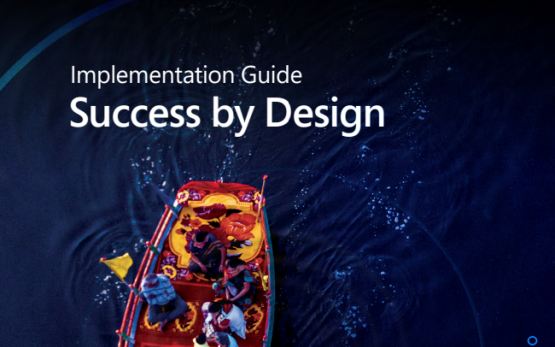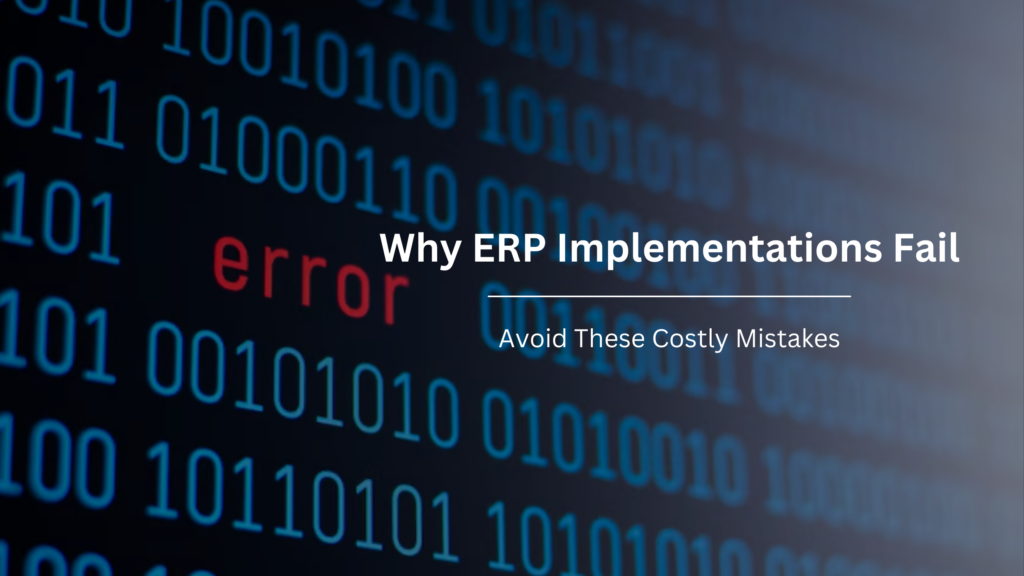Enterprise resource planning (ERP) systems help organizations manage their businesses with efficiency and flexibility—bringing together finance, manufacturing, retail, supply chain, warehouse, and inventory.
What can ERP (enterprise resource planning) systems do for you company?
Automate routine tasks
Spend your time on what matters most by automating tasks that once took time, effort, and resources. Automate reports, set triggers and alerts, and assign tasks to the right team members.
Enterprise resource planning systems are a critical tool in unifying operations across the many departments businesses must manage. Instead of disparate processes, communication challenges between departments, and outdated systems, enterprise resource planning systems provide insight and visibility across your business.
Provide a single source of intelligence
Regardless of the needs of your customers and partners, enterprise resource planning systems help you stay aligned across your assets, employees, and goals—which means your team can work better together.
Unify operations
Connect your warehouses, suppliers, subsidiaries, and teams through a unified system, giving you total visibility of your supply chain all throughout the globe.
Identify areas needing support
Full visibility into your business operations lets you quickly spot trends, downturns, or operational challenges that need your attention, helping you keep your business running at optimal capacity.
The benefits of enterprise resource planning systems
In addition to driving improved visibility and insight, here are additional benefits that enterprise resource planning systems can bring your business:
More efficient operations.
Real-time insights and predictive intelligence come together to help you easily and efficiently identify and resolve anything that hinders optimal operations.
Lower costs.
Improved efficiencies, budget control, and financial process automation let you keep a close watch on your costs and help identify areas for improvement.
Shared best practices.
Connected departments make knowledge-sharing easier than ever, helping elevate all departments to their best performance.
Improved team productivity.
Smoother operations and a central source of information boost productivity by bringing together people, data, and processes.
Smarter strategies.
Connected data takes you beyond outdated spreadsheets, helping you plan growth using dynamic views of future strategic opportunities.
Features you should look for in an enterprise resource planning system
As you explore different tools for resource planning or cloud ERP, make sure you find a system with the following features:
Multi-department integration
Look for a system that allows you to integrate a wide range of data and functions across your business, such as finance, manufacturing, human resources, inventory, and sales.
Built-in intelligence
Machine learning and artificial intelligence can provide insights that help transform your products and customer interactions, guiding your teams to the right business outcomes.
Adaptable platform
Customize, extend, and integrate your solution with other apps, offering confidence your enterprise resource planning system will meet your needs as your business grows.
Integration with other systems
Invest in a system that offers a unified experience, letting you connect and share data across different apps.
Global capabilities
Multi-national organizations must monitor country-specific compliance and tax guidelines. If your business operates throughout the globe, look for a global ERP solution.
Cloud ERP: Flexible, fast, and cost-effective
In the past, enterprise resource planning implementations were mostly on-premises. But with the convenience of accessing data in the cloud, cloud ERP implementations are more and more common.
Cloud ERP systems are flexible, giving you anywhere access to your information, boosting productivity, and keeping teams connected throughout the globe. Being able to access data when on-the-go, or on-location with customers, partners, and suppliers offers a level of convenience that moves business forward.
The straightforward implementation of cloud ERP systems can save time, resources, and the headaches that may occur from complicated, on-premise implementations.
Operating on a monthly subscription, cloud ERP systems often do not require a high, up-front investment, which can make a big difference for smaller businesses.
What is ERP and why do you need it?
ERP stands for enterprise resource planning. It’s software that manages a company’s financials, supply chain, operations, commerce, reporting, manufacturing, and human resource activities.
Most companies have a finance and operational system in place, but most other software out there can’t go beyond everyday business processes or help with future business growth.
As companies expand and their needs change, their systems should keep up with them. We’ll define what ERP is and why it’s smart to have software in place that keeps up with your business needs.
What is enterprise resource planning?
Historically, ERP systems were monolithic suites that worked separately and didn’t talk with other systems. Each system required expensive, complex, and customized code to meet unique business requirements which slowed—or even prevented—the adoption of new technology or process optimization.
What makes today’s ERP Software different is that it brings all these different processes to the table together in one fluid system. It doesn’t just offer data connectivity within your ERP system, but also within your productivity tools, e-commerce, and even customer engagement solutions helping you connect all your data for better insights that help you optimize your processes across your entire business.
In addition, a modern ERP solution offers flexible deployment options, improved security and privacy, sustainability, and low-code customization. But most importantly, it will build continuity and resiliency into your business and processes through insights that help you innovate at a rapid rate today while preparing your business for what’s next tomorrow.
Why ERP is critical for your business
While there’s no all-up solution software for every business process, ERP technology is getting better and better at bringing processes together. Once your processes, systems, and data are connected, you’ll get the intelligence, acceleration, and adaptability you need to start optimizing your operations.
Here’s three ways ERP can improve your business:
- Drive optimal performance. With solutions that integrate artificial intelligence (AI), you’ll access insights that enhance your decision making and reveal ways to improve operational performance going forward.
- Accelerate operational impact. By connecting processes and data, you’ll bring more visibility and flexibility to employees to help them take action quickly and deliver more value across the business.
- Ensure business agility. Many ERP solutions are built to adapt to your needs and grow with you, helping you proactively prepare for—and readily respond to—any operational disruption or market change.
What business functions benefit from ERP?
ERP can cover many core functions across your organization—helping break down the barriers between the front office and back office while offering the ability to adapt your solution to new business priorities. Some of the key business functions include:
Commerce
Today’s retailers face many challenges, and an ERP system can deliver a complete, omnichannel solution that unifies back-office, in-store, and digital experiences. Customers will get a more personalized and seamless shopping experience through AI recommendations, while retailers are able to increase employee productivity, help reduce fraud, and grow their business.
Finance
Modern ERP will help you increase profitability while driving compliance. It offers dashboards and AI-driven insights that give you an overview of your finances to help you tap into the real-time information anytime and anywhere. It should also help you cut down on entering information manually by automating daily tasks and include tracking abilities that help with your business’s regulatory compliance.
Human resources
Modern solutions offer ways to manage company data and streamline employee management tasks like payroll, hiring, and other duties. You’ll be in a better position to help retain, recruit, and empower employees while also tracking employee performance and identifying HR problems before they happen.
Manufacturing
This function improves business communication, automates daily processes through robotic process automation, and offers manufacturers the ability to fulfill customer needs and manage resources by accessing real-time data. This solution also optimizes project and cost management as well as production planning.
Supply chain
If your company is still entering information by hand and trying to track down inventory in your warehouse, you can easily save time and money by automating these processes with ERP. Modern solutions also offer dashboards, business intelligence, and even Internet of Things (IoT) technology to help you get a handle on your inventory management.


Three signs that you need ERP
If you’re reading this and struggling with your legacy system, you probably already know that implementation is in your future, but here are the signs that you definitely need new ERP starting today:
- The basics aren’t letting you grow: Perhaps you’ve been doing fine with basics, but if your current software is putting limits on your market expansion and ability to grow on a global scale, it may be time for a better ERP system that does.
- You’re dealing with disparate systems: As technology changes, you’re noticing that your disparate systems don’t work well together. You may notice that your new accounting software isn’t compatible with your old HR system, and you’re tired of wasting time and resources trying to stitch a solution together.
- You can’t meet customer expectation: If your staff and customers are mobile and your system isn’t accommodating them, it’s time to invest in one that meets everyone’s needs. If you feel like you can’t afford to invest in meeting your customer’s expectations, and you’re not willing to give your staff the tools they need to succeed, you’ll lose them to a competing business pure and simple.
TIP: If you or your staff is asking for a new system and there’s a resistance to an ERP change, one of the ways to combat this is to schedule a demo so everyone can see what’s out there. Plus, when everyone feels like they’re included in on the decision process it’ll make implementation much easier.
Why some businesses are afraid to embrace ERP implementation
Despite all the options out there, some companies are still hesitant about implementing ERP. There could be many reasons why, but where there’s a fear, there’s a solution.
FEAR: How do I know I’m choosing the right ERP solution for my business?
You don’t have to find the perfect software solution to fix everything. ERP should be able to take the best of the business processes you’re using now and bring them together under one system, while letting everyone in your organization view the same information. This is where your choice of at technology partner is important.
FEAR: We can’t afford a major ERP overhaul.
A solution doesn’t have to be an all or nothing implementation proposition. Software solution modules can be purchased separately depending on your business needs. This will help your team ease into the implementation piece of ERP and it’ll save having to invest in a major software renovation without knowing whether or not the functions you’re adding will pay off.
FEAR: We don’t want to lose the systems we have in place now.
As we mentioned, any ERP solution you choose should work with what you’re using now but also include features that can help in your future growth. For instance, if the software you have mostly handles the financial, supply chain, and manufacturing sides of your business, you may want to look for a solution that brings in a strong business intelligence component.
“Even if we do not talk about 5G (specifically), the security talent in general in the country is very sparse at the moment. We need to get more (security) professionals in the system”
Bharti Airtel, for example, has been preparing for 5G roll out by upskilling its professionals and offering them certification courses such as CCNA (Cisco Certified Network Associate) and CCNP (Cisco Certified Network Professional). The courses are offered based on skill and eligibility level free of cost.



